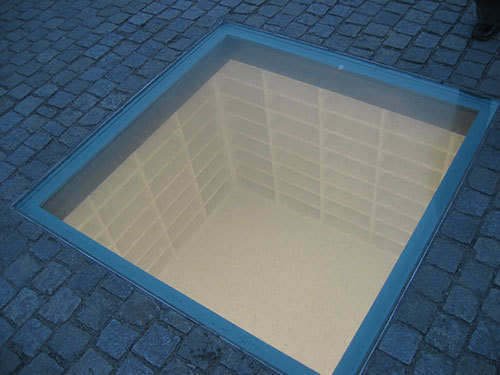Berlin Remembers

At a recent sabbatical presentation, Graphic Design Professor Lucinda Hitchcock spoke about visiting Berlin and observing the details surrounding its memorials as part of her ongoing research into typography, form and narrative. The quiet austerity of the Peter Eisenman–designed Holocaust Memorial (above) made a lasting impression on her, but she was equally taken with some of the more controversial work created by other artists.
Places of Remembrance, for example – a “living memorial” designed by Renata Stih and Frieder Schnock that was installed in the wealthy Bavarian Quarter in 1993 – integrates a series of signs into modern city life that call out the increasingly horrific Nazi laws enacted in Germany in the 1930s and early ’40s. One sign memorializes the day that Jews were ordered to give up their pets. The installation was originally so upsetting to local citizens, Hitchcock explained, that the artists were forced to add a smaller tag to each of the 80 signs indicating that it is part of a memorial. Hitchcock befriended the artists while in Berlin and invited them back to Providence as visiting designers for Graphic Design’s graduate program.

Another powerful installation she experienced first-hand, Stolpersteine (Stumbling Stones) by Gunter Demnig, is a collection of simple, 4-by-4-inch brass markers hammered into the sidewalks in front of the homes of Holocaust victims rounded up by SS troops for deportation. The piece is subtle, Hitchcock said, but each simple, handcrafted marker tells its own terrible story.

And the equally intense Library by Israeli sculptor Micha Ullman remembers the infamous Nazi book burning that took place in Bebelplatz in 1933. An underground room of empty bookshelves is visible from above through a glass plate set into the sidewalk.
“It is the quiet absence of detail – the suggestive white cube of emptiness – that tells the most profound story,” said Hitchcock. Among the courses she teaches is a Graphic Design elective called Setting the Site: Type and Message in the Environment in which students explore the possibilities of developing spatial narratives.
7or8 liked this
